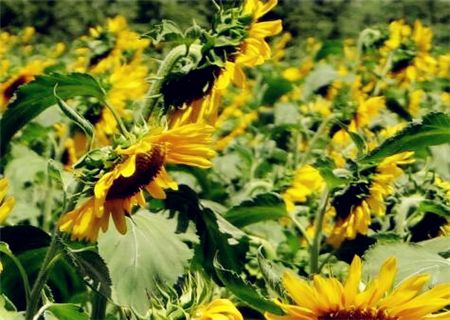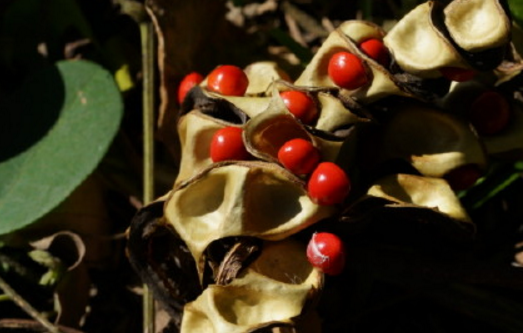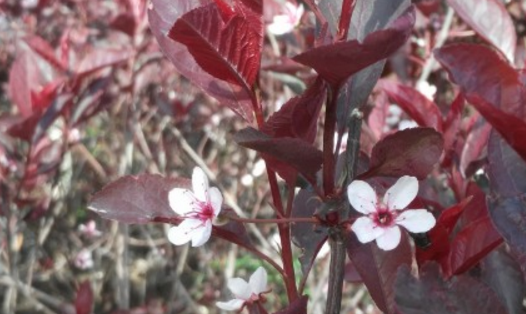When is the best time to sow sunflower, one of the four major oil crops? How to fertilize? What kind of fertilizer is good? best attached
Sunflower is one of the four major oil crops in the world, which was introduced into China since the Ming Dynasty. China's main sunflower producing areas such as Inner Mongolia, Jilin, Liaoning, Heilongjiang, Shanxi and other provinces and autonomous regions. So when is the sunflower good to sow? The following is for you to sort out the sunflower planting time and methods.

Sowing time of sunflower
The sowing time of sunflower is from March to April, the suitable temperature for sowing is 18: 25 ℃, and the sunflower sprouts about 5-7 days after sowing. The basic principle of sowing date selection is to sow early or late appropriately according to the occurrence law of saline-alkali, so that the seedlings can avoid the harm of saline-alkali. Spring sowing or summer sowing according to the growth period of the variety. Adjust the sowing date according to the disease law to avoid the disease-prone season. The sowing date was adjusted according to the growth characteristics to avoid the high temperature of more than 28 ℃ during flowering and filling period. The sowing method is on demand, the soil cover is about 1 cm, and the flowers are about 50-80 days after sowing, which varies slightly according to different varieties.
Planting time and method of sunflower
1. Temperature
Sunflower is native to the tropics, but it has strong adaptability to temperature. it is a kind of temperature-loving and cold-tolerant crop. Sunflower seeds have strong tolerance to low temperature, and the local temperature is stable. When the local temperature is above 2 ℃, the seeds begin to germinate, when the ground temperature reaches 8 ℃, the seeds can germinate and root, and when the ground temperature reaches 8 ℃, the seeds can germinate and take root. The optimum temperature for germination was 31-37 ℃, and the highest temperature was 38-44 ℃. During the whole growth process, sunflowers can grow normally as long as the temperature is not lower than 10 ℃. In the suitable temperature range, the higher the temperature, the faster the development.
2. Moisture
Sunflower has tall plants, many and dense leaves, and is a crop that consumes a lot of water. It absorbs 1.74 times as much water as corn. However, because its growth and development is synchronized with the local rain and heat, the contradiction between water supply and demand is not prominent. There are great differences in water requirements of sunflower at different growth stages. From sowing to budding, it is more drought-resistant and does not need much water, which is only 1.9% of the total water demand. On the other hand, proper drought is beneficial to root growth and enhance drought resistance. The peak of water demand is from budding to flowering, which accounts for about 43% of the total water demand. The water shortage in this period has a great impact on the yield. This stage coincides with more rainfall, which can basically meet the water needs of sunflower growth and development. If it is too dry, it should be replenished with irrigation. There is also more water demand from flowering to maturity, accounting for about 38% of the total water. If there is not enough water, it will not only affect the yield, but also reduce the oil content.
3. Lighting
Sunflowers are short-day crops. But it is not very sensitive to sunlight. For example, under the condition of sunshine in Tianjin, it can blossom and mature normally without special treatment. Sunflowers like plenty of sunlight, and their seedlings, leaves and disk have strong phototropism. Sufficient sunshine, strong seedlings can prevent overgrowth; sufficient sunshine in the middle growth stage can promote the vigorous growth of stems and leaves, normal flowering and pollination, and improve the seed setting rate; the sunshine is sufficient and the seeds are full in the later stage of sunflower breeding.
4. Soil
Sunflower is not strict on soil and can grow on all kinds of soil, from fertile soil to dry land, barren and saline-alkali land. Has a strong ability to tolerate salt and alkali.
1. Drought prevention and drought prevention: according to the law of water demand and drought tolerance of sunflower, it is generally necessary to master the role of drought prevention and drought resistance in the stage of sowing to seedling emergence. From the budding stage, when the aboveground part of the seedling grows slowly and the root system grows very fast, squatting seedlings can be carried out without watering. From budding to flowering, water demand accounts for 43% of its total demand in its lifetime, which is a critical period. In the rainy season, measures such as high soil cultivation and deep trenching should be adopted to discharge waterlogging and prevent waterlogging.
2. prevention and control of diseases and pests: it is necessary to do a good job in the prediction and forecast of diseases and insect pests, and once they occur, we should immediately prevent and cure them, and strive to cure them as soon as possible. When the temperature reaches 18-20 ℃, 30-45 kg of pentachloronitrobenzene and 150-230 kg of moist fine sand per hectare are mixed well and sprinkled on the ground of sunflowers to inhibit the germination of Sclerotinia sclerotiorum. In the first ten days of August, during the occurrence of sunflower borer larvae, 90% trichlorfon 500-fold solution can be sprayed for 2 times.
1. Variety selection
There are many varieties of sunflowers, including edible type, pot planting and cut flower species. Cut flower varieties should be selected for cut flower culture. at present, the common sunflower varieties are qu hybrid F1 generation, "no pollen" varieties, such as Golden 08, double Jin Jixiang and Sanyang Kaitai, etc. Choose varieties for different uses according to your needs. Seeds should choose varieties that have been tested locally and confirmed (registered) through examination, and the quality should meet the standards set by the state.
2. Seed treatment
The seeds were dried for 2 to 3 days before sowing in order to enhance the activity of enzymes in the seeds and improve the germination energy and germination rate. Uncoated seeds were treated with 40% phoxim 150 ml, water 5 kg 7.5 kg, seed dressing 25 kg 30 kg. To prevent Sclerotinia sclerotiorum, the seeds can be soaked in 50% carbendazim 500 times solution for 4 hours, or the seeds can be mixed with sclerotiorum and methyl topiramate with 0.5%-0.6% of the seed weight.
3. Select the place
The cultivation of sunflowers must choose loam or sandy loam farmland with deep soil layer, medium soil fertility, flat terrain, convenient irrigation and drainage, and no sunflower planting in 3-5 years. It is better to use wheat and beans in the previous crop.
4. Land preparation
Do a good job in autumn turning and autumn watering, autumn turning depth is more than 20 cm, strive to deeply loosen the land every three years, postpone watering time as far as possible in conditional areas, and ensure the quality of autumn watering, so as to ensure soil moisture next year.
Before sowing, the method of soil preparation is determined according to soil moisture and varieties. Because of the long growth period and early sowing time of conventional varieties, the soil moisture is better at this time, so the method of soil preparation before sowing can be adopted, that is, shallow ploughing before sowing or ploughing the land with rotary tiller before sowing. Then rake flat in time and sow directly after suppression. The growth period of the hybrid is short, and the sowing time is late, when the temperature rises, the evaporation is large, and the soil moisture is poor, so the method of soil preparation before plastic film mulching, watering and sowing can be adopted. Land preparation should be flat, broken and free of bumps.
5. Base fertilizer
Combined with autumn turning and pressing mature organic fertilizer 2500-3000 kg per mu. In general, 10 kg diammonium phosphate or 15 kg ternary compound fertilizer per mu is suitable for deep application of seed fertilizer before sowing.
6. Sowing time
Cut sunflower seeds are large, which are used for cut flower cultivation and production. The seedlings are often sowed in the hole tray. The mixed soil of peat, culture soil and sand is used as sowing soil, one seed is sown in each hole, the soil is covered with 0.8~1.0cm after sowing, the soil is watered thoroughly to keep the soil moist, it germinates after 4-7 days, and can be planted when the seedling height is 5~6cm. The specific sowing time is determined by the supply time. If flowers are used in May, they will be sown from February to March; flowers will be used in October and sown in August. Ornamental sunflower seeds are large, 2550 seeds per gram, and the optimum temperature for germination is 21mm 24 ℃. Hole sowing is commonly used in the open field, sowing tray is used on demand, and germination is 7 to 10 days after sowing. The germination rate is 80%-90%. Take potted dwarf species as an example. It takes 50 to 60 days from sowing to flowering.
7. Planting
The planting density was determined according to the experiment. There are 2000,2500 seedlings per mu of common sunflower, 3000,3500 seedlings of edible sunflower hybrids and 3500000 seedlings of oil sunflower per mu. The suitable row spacing of planting plants is 20 × 40cm to obtain uniform flowers. Sometimes the plant row spacing should be adjusted according to the soil fertility and the market requirements for stem thickness.
8. Sowing with plastic film mulching
The method of plastic film mulching before sowing and planting with large and small rows was adopted. Choose 70 cm plastic film, mechanical mulching before sowing, one film covering two rows, sowing depth 2-3 cm, shallow soil after sowing. The quality of the film should be close to the combination of the plastic film and the ground, and the soil cover should be strict in the damaged places and hit a soil belt laterally every 5 to 10 meters or so to prevent the plastic film from being destroyed when the wind blows. Conventional species are generally sown 3-5 days after plastic film mulching, 2-3 seeds per hole, and the sowing rate is about 0.75 kg per mu. The hybrids were watered in time after plastic film mulching, and sowed when the ground was fast dry after water, 2 seeds per hole, or single grain per hole, and then double seeds per mu, about 0.5 kg per mu.
9. Planting management
Sufficient light should be given at the early stage of sowing to prevent the plant from overgrowing. Fertilizer can be applied less to limit the flower head is too large and the stem is too thick, which is not conducive to vase. Sufficient water is needed in the seedling stage. If the soil fertility is too poor, nitrogen fertilizer is the main fertilizer in the early stage, and phosphorus and potassium fertilizer is applied in the bud stage, the water should be properly controlled in the bud stage, but under the condition of strong light and high temperature, due to the tall plants, luxuriant leaves and high water consumption, the cut flowers should be watered in time to prevent the leaves from withering and affecting the normal growth of the plants, resulting in the decline of the quality of cut flowers. When cultivated in open field, the root system is more developed, drought tolerance, not much watering in spring, and supplementary watering is needed only when the temperature rises and water evaporation is large in early summer. And potted ornamental sunflowers, large pots and small, the growing period should be timely watering, otherwise the leaves are easy to dehydrate and wither. But should not be too wet, the humidity is too large, the basal leaves are easy to yellowing. According to the size of the aboveground crown, the ornamental sunflower chooses a basin of 10 to 15 centimeters. Fertilize once every ten days during the growing period, or use "Huiyou" 15-15-30 potted flower special fertilizer. If you watch the flower bed, you can pick the heart once, and the branches can produce 4-5 flowers. The height of the plant can be controlled by spraying leaves with 0.25%-0.4% solution 20 days after germination. When the ornamental sunflower is cultivated in the open field, the light time is long and the flowering is often a little earlier, while when cultivated in the greenhouse in winter, the light time is short and the flowering is delayed.
twelve
Time: 2019-03-16 Click:
- Prev

What is the planting method of sea red beans of mimosa tribe? How do you breed? What's the effect?
Sea red beans are native to Southeast Asia, such as India, Malaysia and Java, so what is the planting method of sea red beans? How do you breed? What's the effect? It is understood that sea red beans prefer a warm and humid climate, and the sandy loam with deep, fertile and well-drained soil is suitable for its growth, light and shade tolerance at the same time.
- Next

When does the purple leaf dwarf cherry of Rosaceae bloom? How do you breed? What is the difference between purple leaf plum and purple leaf plum?
Purple leaf dwarf cherry has good ornamental effect, fast growth, simple reproduction, resistance to pruning and strong adaptability, so when will purple leaf dwarf cherry blossom? How do you breed? What is the difference between purple leaf plum and purple leaf plum? According to the data, the purple leaf dwarf cherry usually blossoms in spring, and its flowering period is in April and May.
Related
- Fuxing push coffee new agricultural production and marketing class: lack of small-scale processing plants
- Jujube rice field leisure farm deep ploughing Yilan for five years to create a space for organic food and play
- Nongyu Farm-A trial of organic papaya for brave women with advanced technology
- Four points for attention in the prevention and control of diseases and insect pests of edible fungi
- How to add nutrient solution to Edible Fungi
- Is there any good way to control edible fungus mites?
- Open Inoculation Technology of Edible Fungi
- Is there any clever way to use fertilizer for edible fungus in winter?
- What agents are used to kill the pathogens of edible fungi in the mushroom shed?
- Rapid drying of Edible Fungi

